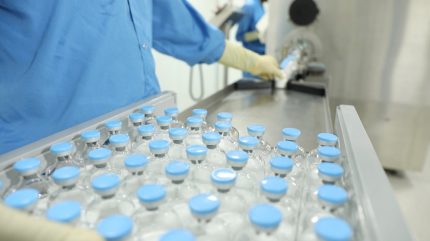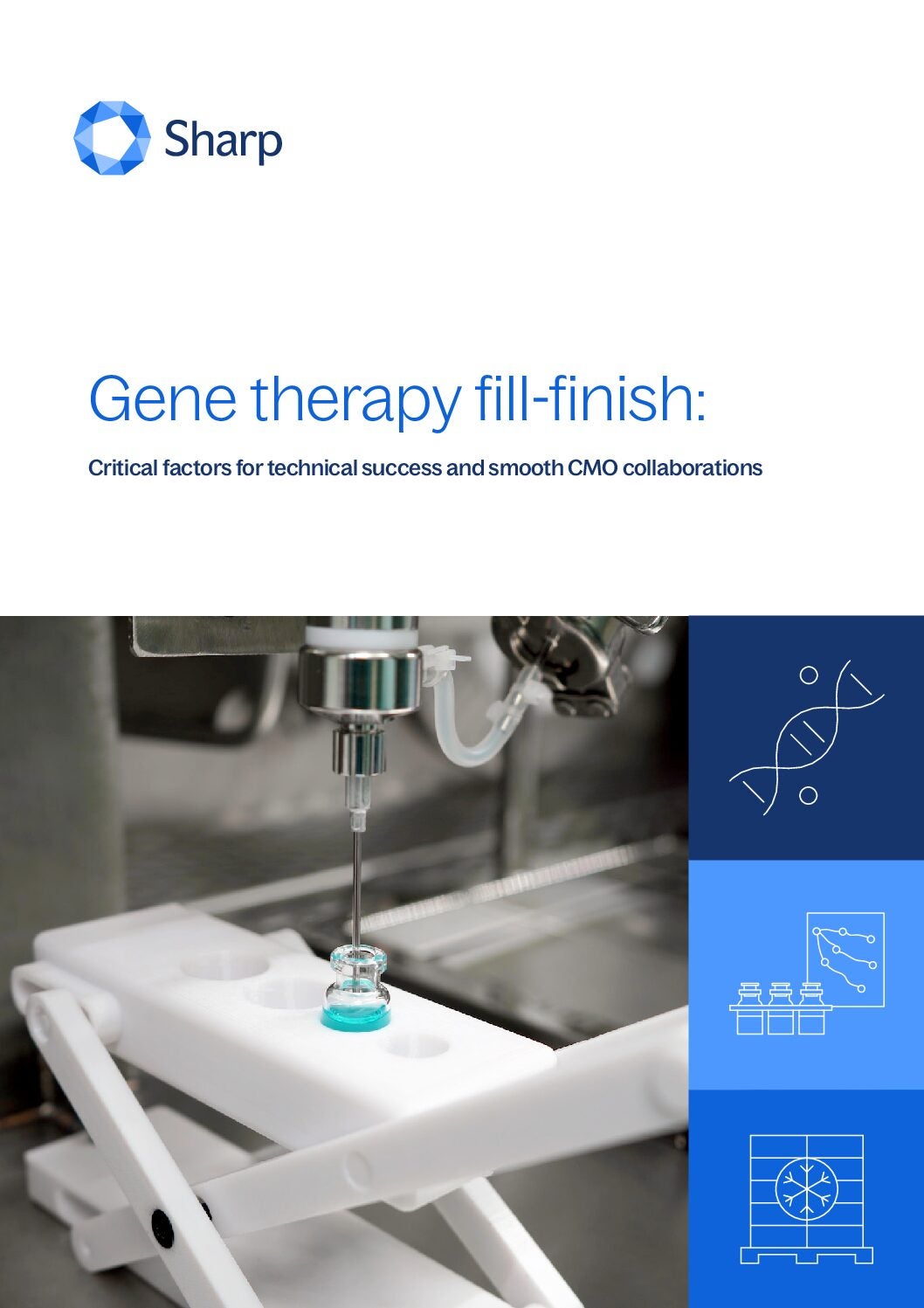
Lyophilization is a vital tool to maintain product quality, extend shelf life, and protect delicate compounds. Many parenteral formulations and drug products are highly sensitive in solution, including:
- Oligonucleotides: siRNAs, miRNAs, DNA/RNA vaccines, polyplexes
- Protein-based drugs: mAbs, glycoproteins, enzymes, cytokines, fusion proteins
- Peptides: Hormones, peptide-based vaccines
- Nano carriers formulations: i.e. Liposomes, lipid nanoparticles (LNPs) and polymeric micelles
Lyophilization – the process of removing moisture from drug products via freeze-drying – is highly advantageous to protecting product quality, extending shelf-life, and simplifying the storage and distribution process. Certain drug products experience an astonishing improvement in stability – transforming from a few weeks of efficacy at controlled room temperature in solution to abiding years within a lyophilized cake.
However, the lyophilization process does not come without its own set of challenges. Beyond the many complexities of just formulating the product and designing its cycle, the process of scaling up from a lab-scale freeze dryer to a commercial lyophilizer requires a number of specific considerations. In this blog, we will discuss the challenges that arise during the scale-up of freezing and drying stages of the lyophilization cycle.
Understanding the lyophilization process
Lyophilization involves three primary phases: freezing, primary drying (sublimation), and secondary drying (desorption). The process begins by freezing the product to solidify the water content. During primary drying, a vacuum is pulled on the drug product and the temperature of the shelf is increased while keeping product temperature below the collapse temperature of frozen product to sublimate frozen water in the drug product, converting ice directly to vapor and removing it via vacuum and collecting it on condenser. The primary drying is continued for an optimized period of time until it removes the majority of water content of the product, usually >90%. Once a plateau state is obtained, the product is subjected to a secondary drying phase where residual moisture is removed through desorption. The temperature of secondary drying is usually at a level above the collapse temperature of the frozen product. The result is a product with an extended shelf life, improved stability, and reduced susceptibility to degradation.
Cycle design
The key cycle parameters, including freezing rate, shelf temperature, and vacuum pressure, are established based on the product’s thermal characteristics and stability requirements. These parameters are closely tied to the thermal data that should be obtained during formulation development, including critical temperatures like the glass transition temperature (Tg), eutectic temperature (Te), and collapse temperature (Tc). Based on these thermal characteristics of frozen product, a baseline cycle is designed and executed on laboratory scale lyophilizer equipment with process monitoring capabilities, i.e. LyoRx probes, a Pirani gauge, a LyoBalance and pressure rise testing.
A lyophilization cycle typically consists of three primary phases, each with distinct goals and considerations for this baseline optimization:
- Freezing – Rapidly or slowly reducing the product temperature to form a stable, solid matrix. This phase is critical for maintaining cake structure and ensuring the proper formation of ice crystals.
- Primary drying (sublimation) – Removing the bulk of the water content by sublimating ice under reduced pressure, while maintaining the product temperature below the collapse temperature to preserve cake integrity.
- Secondary drying (desorption) – Removing residual bound moisture from the product, ensuring long-term stability and minimizing potential degradation.
Once the thermal characteristics are understood, the focus shifts to identifying and controlling the critical process parameters (CPPs) that directly impact the product’s critical quality attributes (CQAs). These CPPs may include:
- Freezing temperature – Influences ice crystal size, pore structure, and subsequent drying rates.
- Freezing rate – Affects the formation of the solid matrix and can impact both cake appearance and reconstitution time.
- Annealing temperature and time – Used to encourage crystal growth and reduce the amorphous content, potentially improving product stability.
- Primary drying temperature, pressure, and time – Must be carefully balanced to maximize sublimation rates without compromising cake structure.
- Secondary drying temperature, pressure, and time – Critical for removing bound water, directly affecting residual moisture levels and long-term stability.
Fine-tuning these parameters through experimental trials is essential to achieving an optimized cycle, balancing efficiency, product quality, and scalability.
Challenges occur with scale up & tech transfer
Although initial lyophilization cycle development occurs at the laboratory scale lyophilizer, a crucial part of lyophilization cycle development also occurs during the scale up to commercial scale lyophilizers. Directly transferring laboratory-scale conditions to commercial-scale equipment can lead to significant challenges, including cake collapse, vial breakage, and compromised product integrity. Every step of the process, including freezing, primary drying, and secondary drying can be influenced by scale-related factors such as differences in heat transfer dynamics, vapor flow patterns, and equipment characteristics. Therefore, the commercial-scale cycle must be carefully designed and optimized to replicate the product temperature profiles established at the laboratory scale, ensuring consistent product quality, stability, and reproducibility at larger manufacturing volumes.
Scale-up challenges: Freezing
Ice crystal formation and porosity
Ice crystal size formed during freezing significantly affects cake porosity and drying rates. Larger ice crystals facilitate faster sublimation due to higher porosity. When transferring from laboratory to commercial lyophilizers, the ice crystal formation can be significantly impacted due to variations in shelf temperature uniformity, cooling rates, and environmental conditions. Commercial-scale equipment typically exhibits different cooling dynamics due to higher thermal masses and larger batch sizes. Differences in cooling rates can lead to non-uniform ice nucleation, resulting in variable crystal sizes within the batch. Precise control over cooling profiles, ensuring uniform thermal exposure, and potentially employing controlled ice nucleation techniques can help maintain consistency in ice crystal formation and porosity during scale-up.
Supercooling
Supercooling occurs when a liquid is cooled below its freezing point without forming ice. If the lab and commercial lyophilizers have similar freezing rates and degrees of supercooling, the formation of ice crystals should be similar as well, resulting in cakes with a similar porosity. However, in practice, commercial lyophilizers often exhibit a higher degree of supercooling due to the particle-free environment in the manufacturing setting. With almost zero particles present in the environment, there are fewer nucleation points to form ice crystals, allowing the water to stay liquid at a lower temperature. Supercooling results in smaller ice crystals, meaning the cake will have smaller pores and a lower vapor flow rate. An annealing step or ice nucleation are options to increase crystal size or reduce supercooling, respectively.
Cooling rate variability
During tech transfer, failure to match or account for differences in cooling behavior can result in non-equivalent product outcomes, even with identical formulations and drying protocols. Commercial lyophilizers cooling rates may differ significantly due to higher shelf mass, vial load, and refrigeration system capacity. Variations in cooling rates can alter excipient crystallinity and affect product stability. Equipment capability assessments and controlled cooling protocols must be established to ensure consistency in cooling performance across laboratory and commercial scales.
Vial breakage
Another potential challenge when transitioning from lab scale to commercial scale lyophilizers is vial breakage. It typically occurs when bulking agents such as mannitol or excipients such as sodium chloride are used. One potential cause for vial breakage involves the materials used in the lyo process itself. For example, use of trays with a bottom versus use of bottomless trays could impact vial breakage. The bottomless tray, because of increase shelf-to-vial heat transfer compared to a tray with a bottom, would experience a faster cooling rate and change the crystallization of its solute. Crystallization at a lower temperature can cause increased mechanical stress, resulting in vial breakage. For the same reason, a higher degree of supercooling in the commercial dryer is a risk for breakage as well.
Scale-up challenges: Drying phases
When scaling up the lyophilization process from lab-scale to commercial-scale, differences in equipment design and capabilities can significantly impact the primary and secondary drying phases. Understanding and managing these variations is crucial for maintaining process consistency and product quality.
Chamber pressure control
Differences in equipment design and chamber volume between lab-scale and commercial-scale lyophilizers can significantly impact pressure control during drying phases. Commercial-scale units often experience higher pressure fluctuations and baseline shifts in sensors due to steam exposure or larger vacuum system dynamics i.e. variations in chamber volume, vacuum pump capacity, and condenser efficiency can impact sublimation rates. Pressure fluctuations, common in larger commercial systems, must be anticipated and managed through careful calibration and robust pressure control strategies. Understanding and evaluating the impact of different vacuum ranges during laboratory-scale lyophilization cycle development can significantly aid in predicting and managing pressure fluctuations typically observed in commercial-scale lyophilizers. Establishing acceptable pressure ranges and proactively assessing the product’s sensitivity to vacuum variations early in the lyophilization cycle development process will support smoother technology transfer and reliable scale-up outcomes.
Choked flow
During primary drying in freeze-drying, water vapor must travel through a duct from the product chamber to the condenser. If the vapor flow rate increases to the point where its velocity at the duct exit reaches the speed of sound (Mach I), a phenomenon known as choked flow occurs. At this stage, further reductions in condenser pressure no longer improve vapor flow. Instead, they cause a rise in chamber pressure and reduce process control. Research by Patel et al. (2010) showed that this condition arises when the chamber-to-condenser pressure ratio exceeds about 2.5, especially at lower operating pressures[1]. Recognizing and designing around the Mach I limit is critical for maintaining consistent chamber pressure and ensuring robust process performance at scale.
Choked flow can cause a pressure build-up in the chamber, alter sublimation rates, and compromise product uniformity. Understanding and preventing choked flow is essential for designing efficient lyophilization cycles, particularly during scale-up, where higher loads and increased vapor generation can make systems more prone to choking.
Heat transfer differences
Differences in shelf thickness between lab scale and commercial scale dryers can also affect the drying phases. Lab dryers often have a shelf thickness of 12-13mm, whereas newer commercial scale dryers will have a thickness of 15, 18, or 21 mm. Older freeze-dryers may have even thicker shelves. A thicker shelf has a higher resistance to heat, meaning the temperature of the shelf surface may be lower, causing a difference in sublimation rate. As a result, adjustments to shelf temperature must be made to compensate for these differences during scale-up to ensure consistent drying times and product quality.
Furthermore, differences in vial loading configurations between laboratory and commercial scales, such as tightly packed (“honeycomb”) arrangements versus ready-to-use (RTU) trays with deliberate gaps between vials, can significantly impact heat transfer rates. Vial spacing directly affects radiative and conductive heat transfer, altering drying uniformity and process duration. Therefore, adjustments to shelf temperature profiles and careful consideration of vial arrangement and loading density are essential during scale-up to ensure consistent heat transfer and reliable drying performance.
Shelf temperature uniformity
Lyophilizers are heated by a fluid flowing in a serpentine pattern across the shelf. As the fluid loses heat along its path, the temperature at the exit end of the shelf is higher than at the entry point. This can lead to uneven temperature distribution across the shelf, resulting in hot and cold spots leading to uneven drying across shelves, causing non-uniform product moisture content or cake appearance. These temperature variations can differ between lab-scale and commercial-scale lyophilizers, hence, it is crucial to verify the uniformity of shelf temperature during scale-up and identify any hot or cold spots that may compromise the lyophilization process. Even the location of measurement of temperature within the lyophilizer can differ between models, causing additional variability. It is necessary to measure these variations to reduce the chance of scale-up failure. As these temperature fluctuations are commonly anticipated in commercial lyophilizers, it is crucial to evaluate the potential impact of these variations during laboratory-scale lyophilization cycle optimization. By proactively assessing product sensitivity to shelf temperature fluctuations and confirming that the impact on critical quality attributes is minimal, the risks associated with scaling up can be significantly reduced. Ensuring thorough characterization and adjustment of temperature profiles during cycle optimization supports consistent drying performance and maintains product quality at commercial scale.
Edge effect
The “edge effect” refers to the phenomenon where product in vials located near the walls or doors of the lyophilizer chamber is exposed to higher temperatures, increasing the risk of cake collapse. Different lyophilizer models have varying configurations of chambers and condensers, which can lead to this temperature variation depending on the product’s location within the chamber. Understanding and accounting for these temperature discrepancies is crucial for ensuring uniform product quality throughout the lyophilization process. The edge effect may be estimated from experience or measured via product temperature sensor during an engineering run.
Data from engineering runs can be particularly susceptible to the edge effect when only a limited number of vials are used. To effectively manage and evaluate this phenomenon, placebo-filled vials should be strategically employed to maximize the loading capacity of the lyophilizer. Product-containing vials can then be positioned at critical sampling locations, such as shelf centers, front and back corners, and diagonal points. Meanwhile, placebo vials should occupy the remaining shelf areas. This approach ensures comprehensive assessment of temperature uniformity and drying performance, allowing accurate detection of potential edge effects and facilitating robust scale-up from laboratory to commercial lyophilization.
Conclusion
Successfully scaling lyophilization from pilot to production is no small feat, given the complex challenges that can arise. From managing supercooling and equipment cooling rate variations to addressing vial breakage, chamber pressure inconsistencies, and process control precision, each step demands careful attention. Factors like heat transfer differences, shelf temperature uniformity, edge effects, product load variations, and container closure integrity can significantly impact product quality and batch consistency. However, by anticipating these hurdles and implementing rigorous process controls, CDMOs can ensure a smoother scale-up, reducing the risk of costly delays and safeguarding product efficacy. With the right expertise and approach, the path from pilot to production can be navigated with confidence, delivering reliable results at commercial scale.
[1] https://www.sciencedirect.com/science/article/pii/S0009250910004537?via%3Dihub


